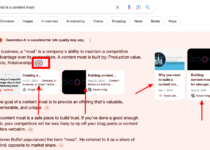War Looms On The Apple Front Amid Internal Elon Musk Twitter Struggles
iPhone creator has the ability to restrict the newly controversial tweeting experience from all iOS users.
- Elon Musk recently purchased Twitter for $44 billion, during a period in which he also sold a sizeable amount of Tesla stock.
- Musk has already overseen the removal of content moderators on Twitter, triggering a mass exodus of users from the platform.
- Elon Musk claims Apple has already threatened to remove Twitter from its App Store, effectively restricting access to Twitter for at least some 1.2 billion iOS users.
- Many Tesla owners use iOS to access and use their vehicles. A standoff with Apple might cause further difficulties to Musk’s increasingly unstable empire.
In his 51 years, Elon Musk has become known for many unusual things. His company makes electric cars on a massive industrial scale and was the first to ever do so. He’s been held to account for some of the more inappropriate activities that take place on the company dime under the apparently lax moral culture at Tesla. And no stranger to the spotlight, Musk somehow even found himself playing the friendly shoulder on which to lean for the publicly shamed and humiliated “damsel” during the height of the Johnny Depp Amber Heard trial.
But now most famously, Elon Musk embraces the extremes of free speech absolutism, despite warnings from advocates of traditionally targeted communities. With the departure of high-profile users, celebrities, content moderation departments and other Twitter watchdogs, the speech on Twitter has apparently become closer to Musk’s definition of “free.” As it turns out, advertisers haven’t been much of a fan of free speech on social media platforms.
From an ad company’s perspective, concern over hate speech has fuelled other massive platform restructures and exoduses. A similar play was called on Youtube in 2017. And since then, smaller content creators on social media platforms have had stiff competition from their larger corporate counterparts since advertisers drastically reduced their rates almost en masse from sponsoring. The financial effects reverberated throughout the social mediaverse, especially for smaller content creators.
Five years ago, the argument was that advertisers wouldn’t tolerate their products being marketed alongside hate speech; although the definition of “hate speech” was even more nebulous than it is today. The landscape of marketing, especially digital marketing, is far beyond 2017 projections of scale. At one point, television ad spending dwarfed digital marketing spending; but at this point, the tables have turned.
Ad some of these same advertisers are still hawking their wares on the same social media platforms today, even though the same internet is still chock full of hate speech on just about every major social media platform. So, you might argue, the previous exodus of advertisers from Youtube was ineffective at curbing hate speech, since there’s still hate speech on Youtube.
But then, you might hear in retort, that another, deeply felt consequence of that exodus was fulfilled, nonetheless. An implied culling of users and accounts came with the contingency offered by Youtube — to the advertisers, not the users. Without the ability of smaller content creators to monetize at the rate available to them before, many were forced completely out of the business of making monetizeable content on Youtube.
This new TV style content was much more attractive for advertisers, and much more difficult to recreate for smaller content creators.
In their stead flowed a river of polished, seemingly well-researched, quite well-lit, professional content; complete with actors/personalities. It was even more controlled than television now, as algorithms were being implemented to funnel recommended content to certain groups. Everything changed during this restructure. The gist for most was that there was too much hate-speech on Youtube, so all of the content creators (contractors) were basically being laid off.
Except they weren’t laid off. Technically, they were still free to create content for Youtube, they just wouldn’t be paid anywhere near the same rates for their work anymore. This destroyed incentive to create content for Youtube for quite a few small creators. People that successfully made a living doing it before could sometimes no longer entertain a modest audience for a meager, yet sustainable living. Almost immediately, the culture of Youtube drastically regressed to a corporate playground ruled by in-crowds in the sun while almost everybody else appeared to have just left recess entirely for a while.
It was less personal, much less “You,” and much, much more “Tube.” From the perspective of an advertiser the outcome was a good thing in the short term; following their established logic, they now had every reason to believe their commercials and ads would have no chance of being somehow mistaken as endorsements of hate-speech, which, ironically, is still rampant on social media today.
But as an observer, I took note of the decline. I’d already learned quite a few skills from Youtube 5 years ago, when the internet was a much different place. There were less robotic influences on where you could go on the internet; if you searched for something, chances were that eventually you’d find it, or something similar. Things are much different now, with algorithms written by unseen entities overseeing, scrutinizing and influencing seemingly every click and keystroke.
Casualties Of A Digital War
If claiming that a social media company’s failure to adequately moderate hate-speech was an effective way to work with that company to purge users just half a decade ago, there’s no reason to believe such a maneuver wouldn’t cause a similar overhaul for today’s Twitter.
Imagine, if you will, a world in which Apple accuses Twitter of failing to moderate hate-speech, the way “the advertisers” (seemingly in a blanket fashion) accused Youtube years ago: Musk might finally get the bot-o-calypse he’s been quivering for since before he purchased Twitter.
Even though he made the unsolicited offer to purchase it, Musk waffled, eventually arguing against what he insisted was an unrealistically high $44 billion valuation of Twitter, citing the proliferation of bots on the platform as opposed to real users. Perhaps he thought it within reason to expect that culling a certain volume of accounts might effectively prove that the number of users reported by Twitter in its initial valuations was inaccurate.
But the point of such theoretical posturing, if there even is one, is yet unclear.
Even if he were able to somehow prove that Twitter executives lied about the value of Twitter prior to selling it to him for $44 billion, none of that’s going to convince the right people that a lie about the number of users on the platform somehow caused Musk to drive a previously successful company into immediate and unprovoked crisis.
It may have started as an elaborate, billionaire’s prank, but Elon, in trying to force Twitter to disclose bot info, was forced to pay $44 billion to be turned into the butt of his own joke.
Today, the crypto spam problem Musk was so concerned about is entirely his own responsibility. As the new company head in a period of turmoil, it remains to be seen how the policies of Elon Musk will effect the proportion of real users on Twitter as opposed to bots.


